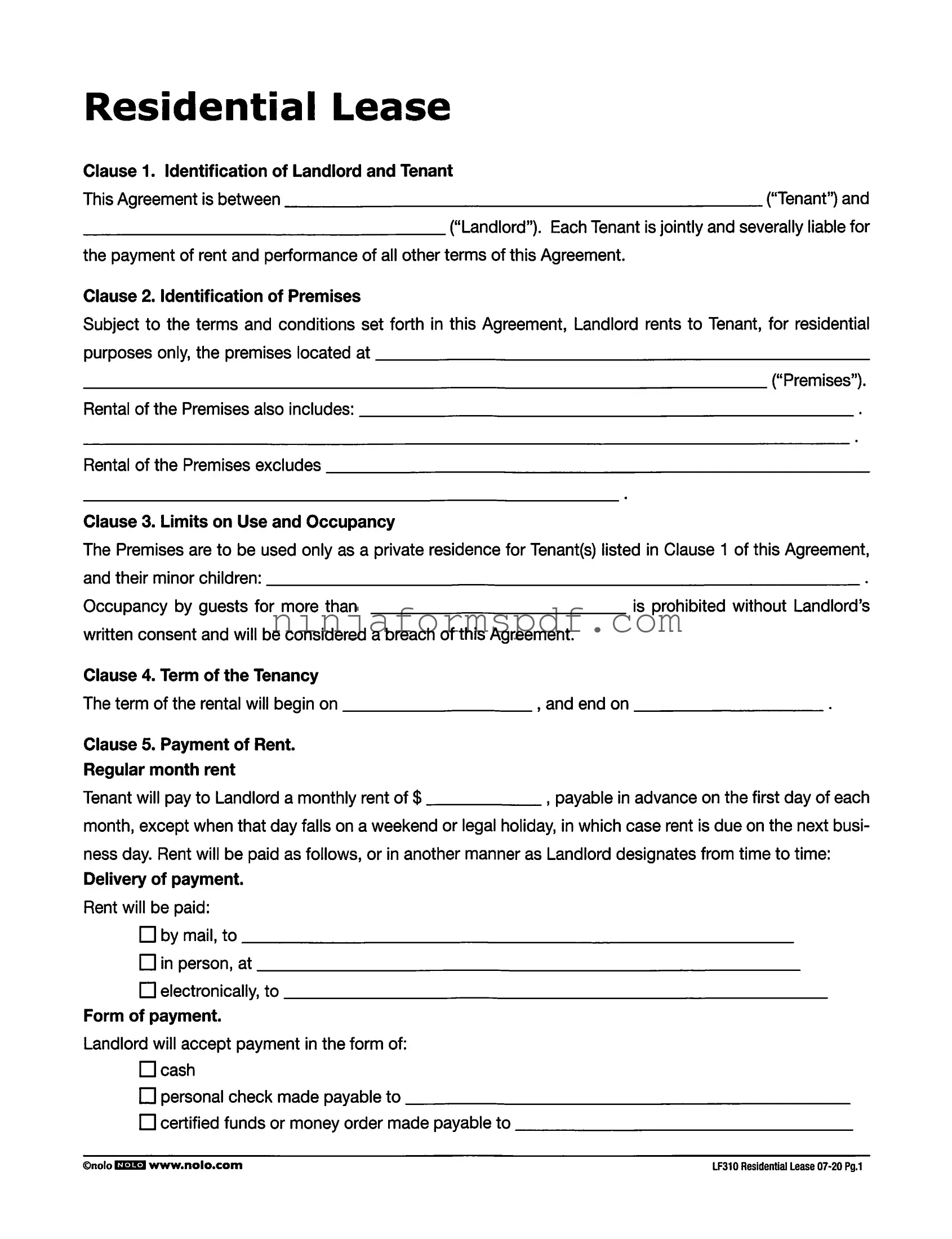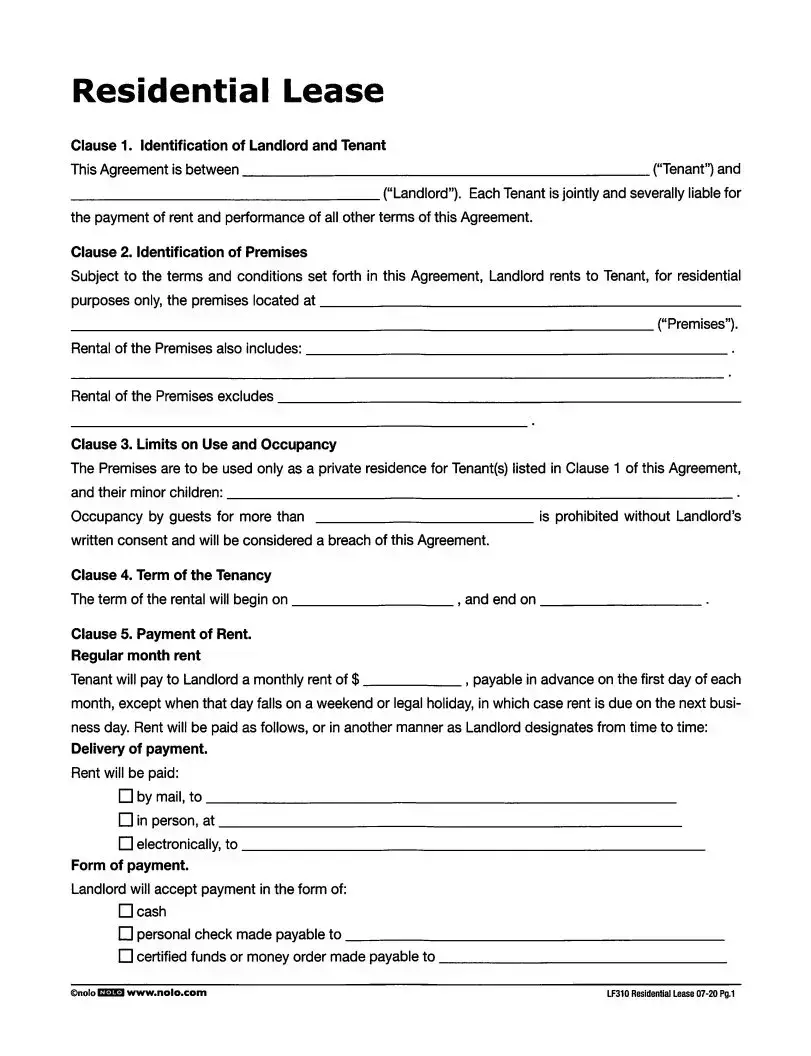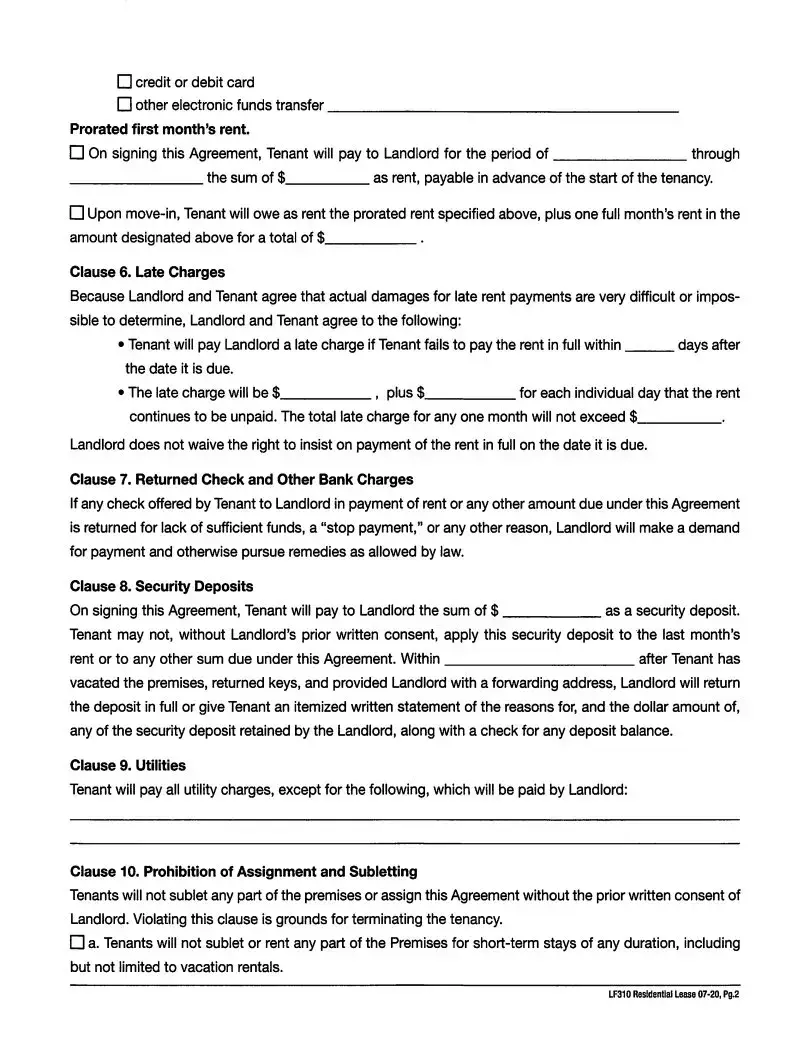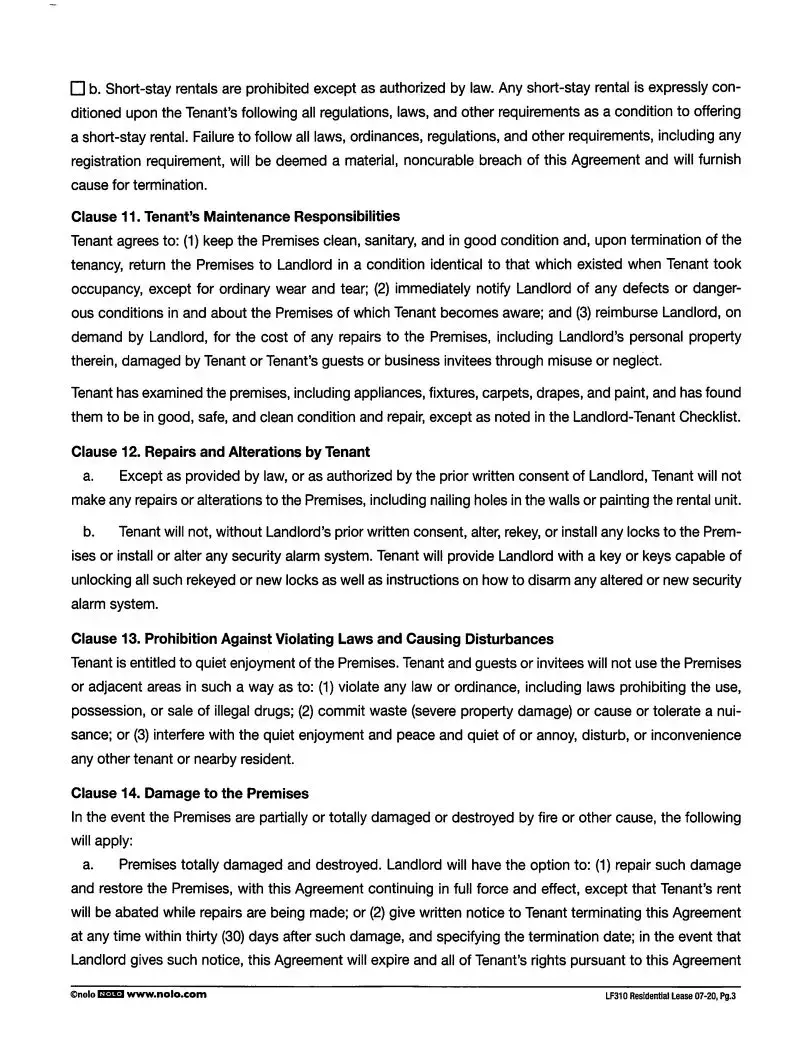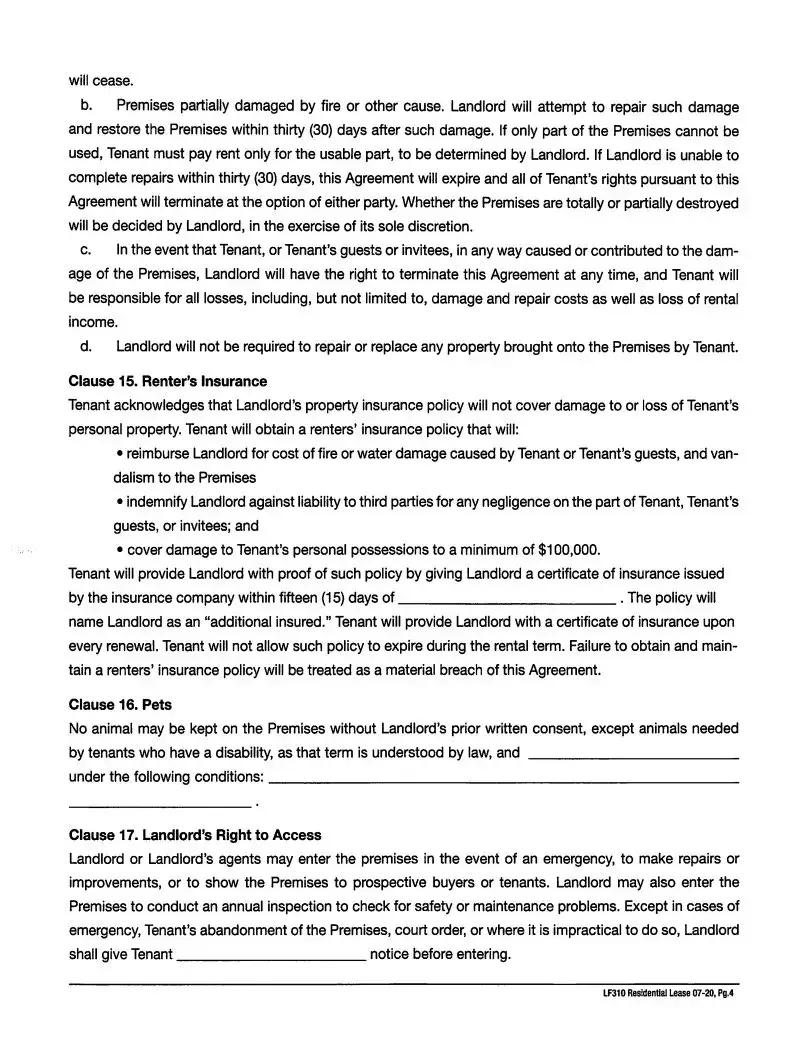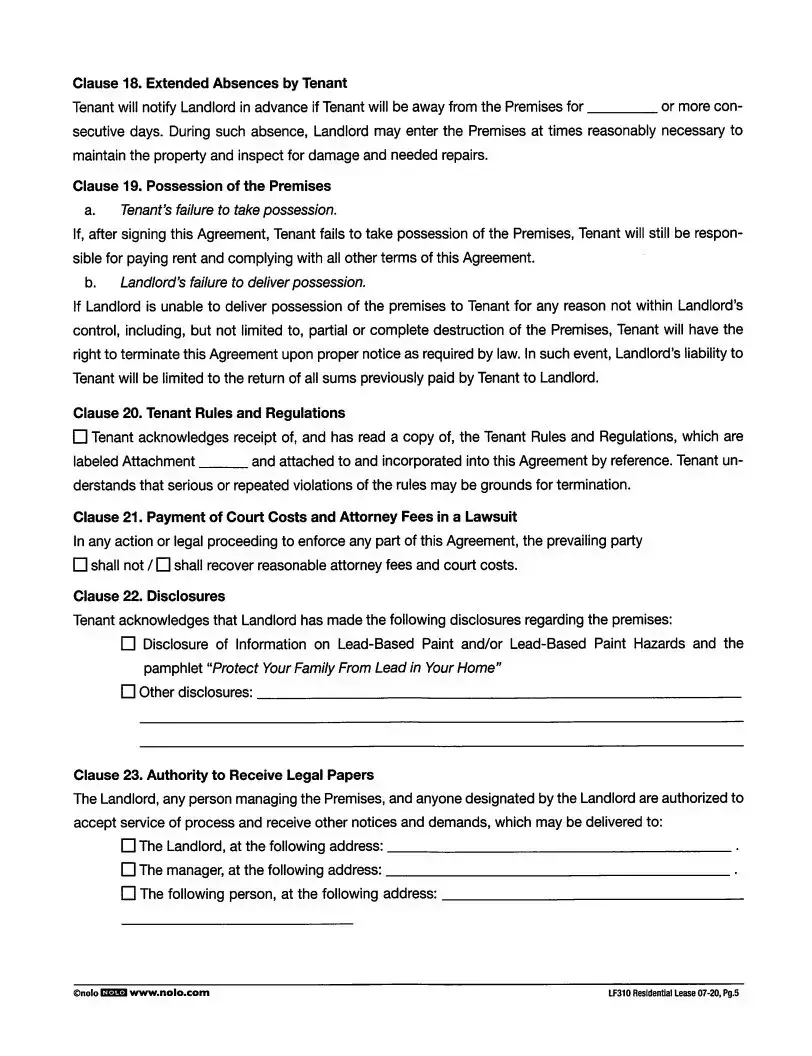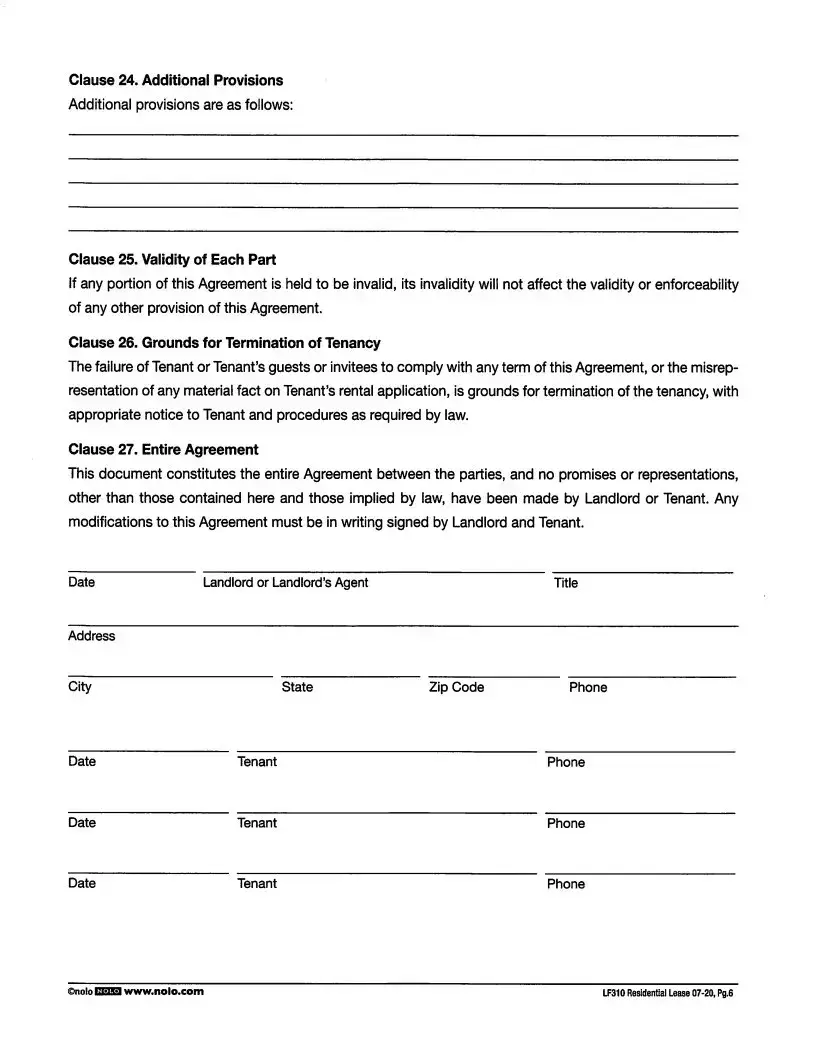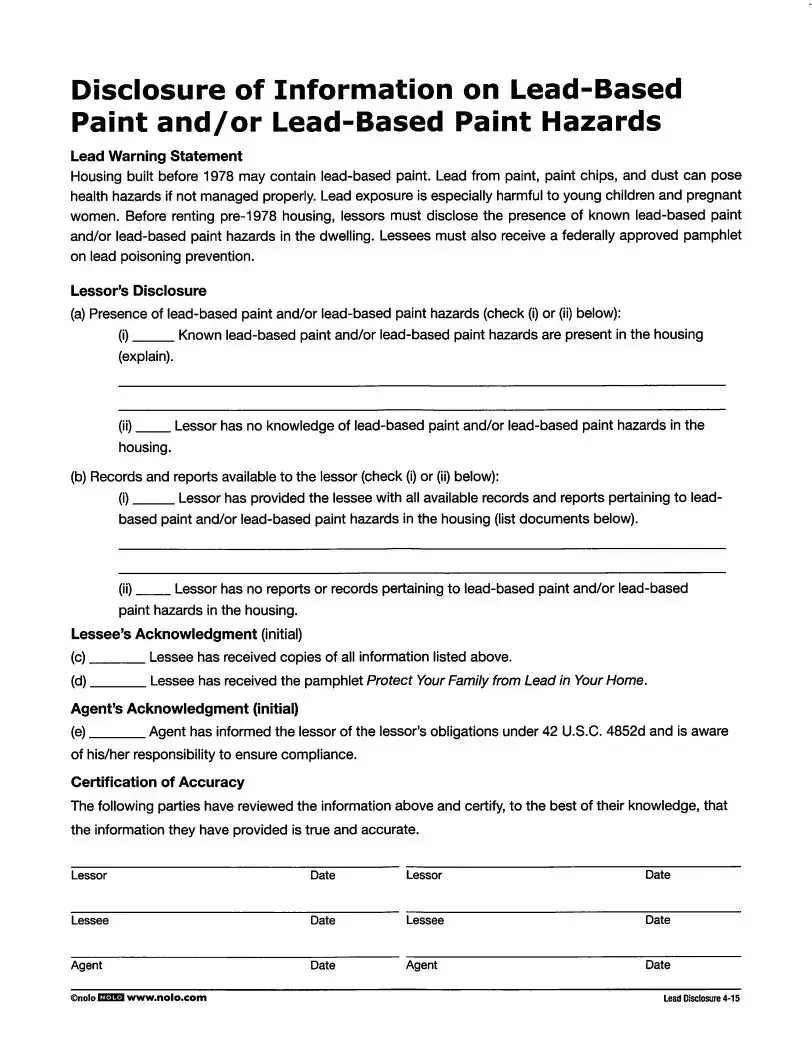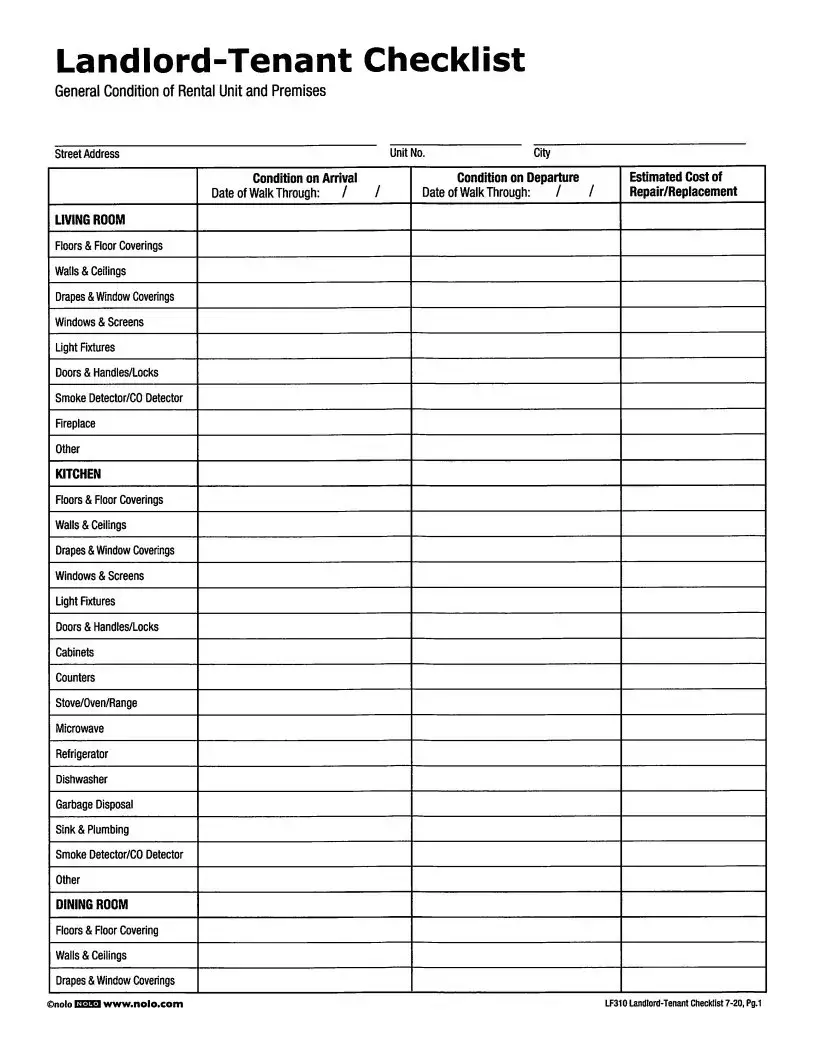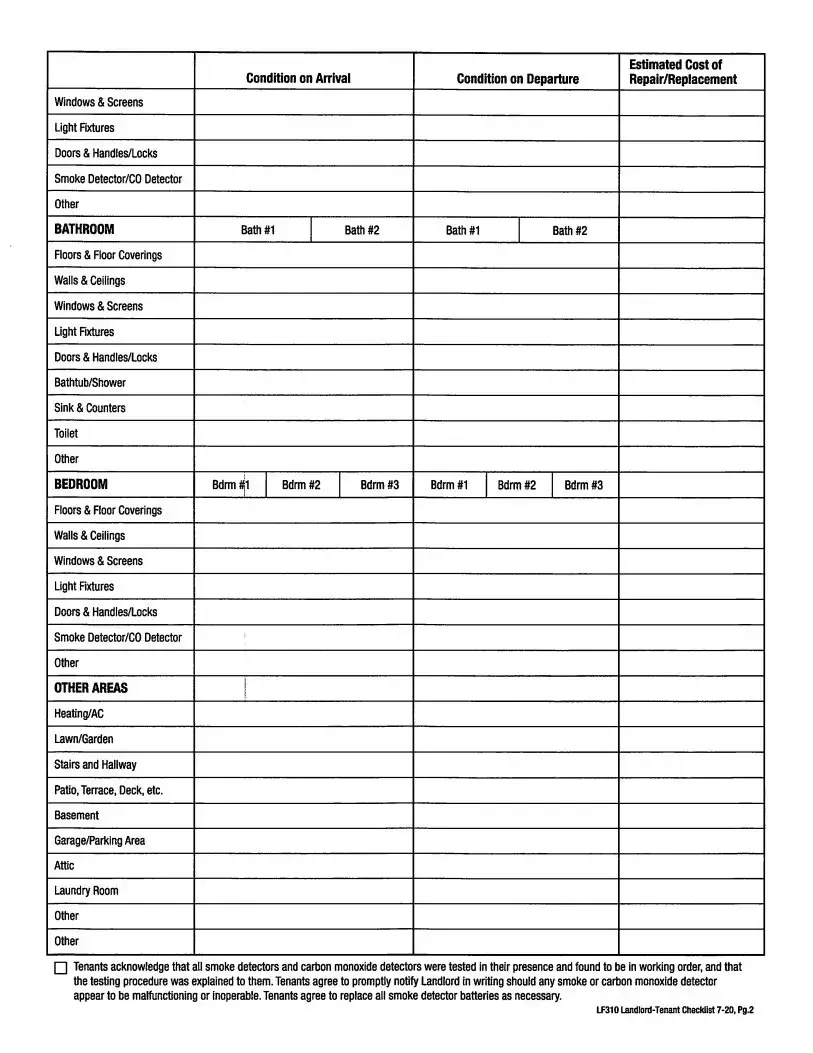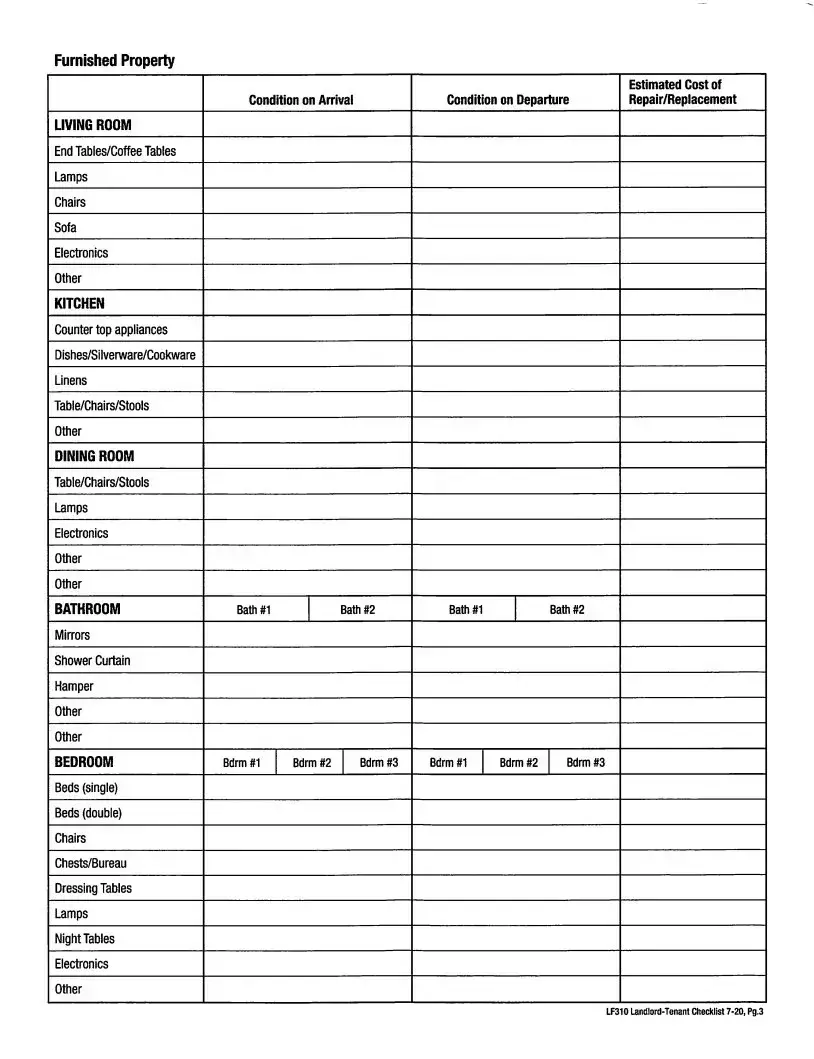The Residential Sublease Agreement is a document that bears a strong resemblance to the LF310 Residential Lease form in its foundation, focusing on the arrangement between an original tenant and a subtenant. Like the LF310, it identifies the parties involved, defines the premises to be leased, sets a term for the tenancy, specifies the amount of rent and the method of payment, outlines the utilities to be paid by the subtenant, and highlights the conditions under which the agreement can be terminated. Both agreements serve to regulate the living arrangement in a detailed and structured manner.
A Commercial Lease Agreement, while intended for business premises rather than residential use, shares several fundamental elements with the LF310 Residential Lease form. It identifies the landlord and tenant, describes the premises, specifies the lease term and rent payment details, and includes provisions about utilities, security deposits, and the use of the property. Although one is for residential and the other for commercial purposes, both aim to formalize the rental arrangement through clear terms and conditions.
The Month-to-Month Rental Agreement is another document akin to the LF310 Residential Lease form but with a key difference in the duration of the tenancy. This type of agreement allows for a more flexible living arrangement where either party may terminate the lease with proper notice, typically 30 days. Despite this flexibility, the document still shares similarities with the LF310, such as specifying rent amount, payment method, security deposit details, and responsibilities for utilities, thereby establishing the terms of the tenant's temporary occupancy.
Lease Renewal Agreements extend the original lease term, ensuring continuity in the landlord-tenant relationship. Although primarily focused on extending the lease, this document mirrors the LF310 in maintaining the core terms of the original lease, such as rent payments, premises details, and other key conditions initially agreed upon. This similarity underscores the importance of consistency in lease terms upon renewal.
A Room Rental Agreement, designed for renting out individual rooms within a property, shares similar traits with the LF310 Residential Lease form. It includes identification of the parties, defines the specific space being rented, sets out the rent amount and payment details, and outlines the rules regarding utilities and shared living spaces. Both documents are structured to create clear expectations and boundaries for a shared living environment.
The Vacation Rental Agreement is used for short-term rental arrangements, typically for vacation properties. Like the LF310, it specifies the identities of the landlord and tenant, provides a description of the rented premises, details the rental period (though much shorter), outlines payment terms, and addresses issues like security deposits and utilities. Both aim to ensure a mutual understanding of the rental agreement, albeit for different durations of occupancy.
Property Management Agreements, which outline the responsibilities and expectations between a property owner and a property manager, share thematic similarities with the LF310 Residential Lease form by establishing terms of engagement, albeit from a different angle. While not a lease to a tenant, it focuses on the maintenance and leasing out of the property, touching upon aspects like collecting rent and handling utilities, which are also prominent in residential leases.
An Eviction Notice, though not a lease agreement, is procedurally related to documents like the LF310 Residential Lease form. It comes into play when terms of such an agreement are violated. This document specifies what conditions have been breached and outlines the steps required for remediation or vacating the premises. The connection lies in the enforcement of the lease terms agreed upon in documents like the LF310.
The Co-Signer Agreement is an auxiliary document often associated with residential leases like the LF310, especially when a tenant's financial stability or rental history does not meet the landlord's criteria. This document requires a third party to agree to be responsible for the rent if the tenant fails to pay, reinforcing the lease's terms by adding an additional layer of security for the landlord.
Lastly, a Lease Amendment is used to make changes to an existing lease agreement like the LF310. This could involve altering the rent amount, lease term, or other conditions initially agreed upon. Despite the changes, the core aim of defining the relationship between landlord and tenant, as well as setting forth the terms of occupancy, remains aligned with the purposes of the original lease agreement.
